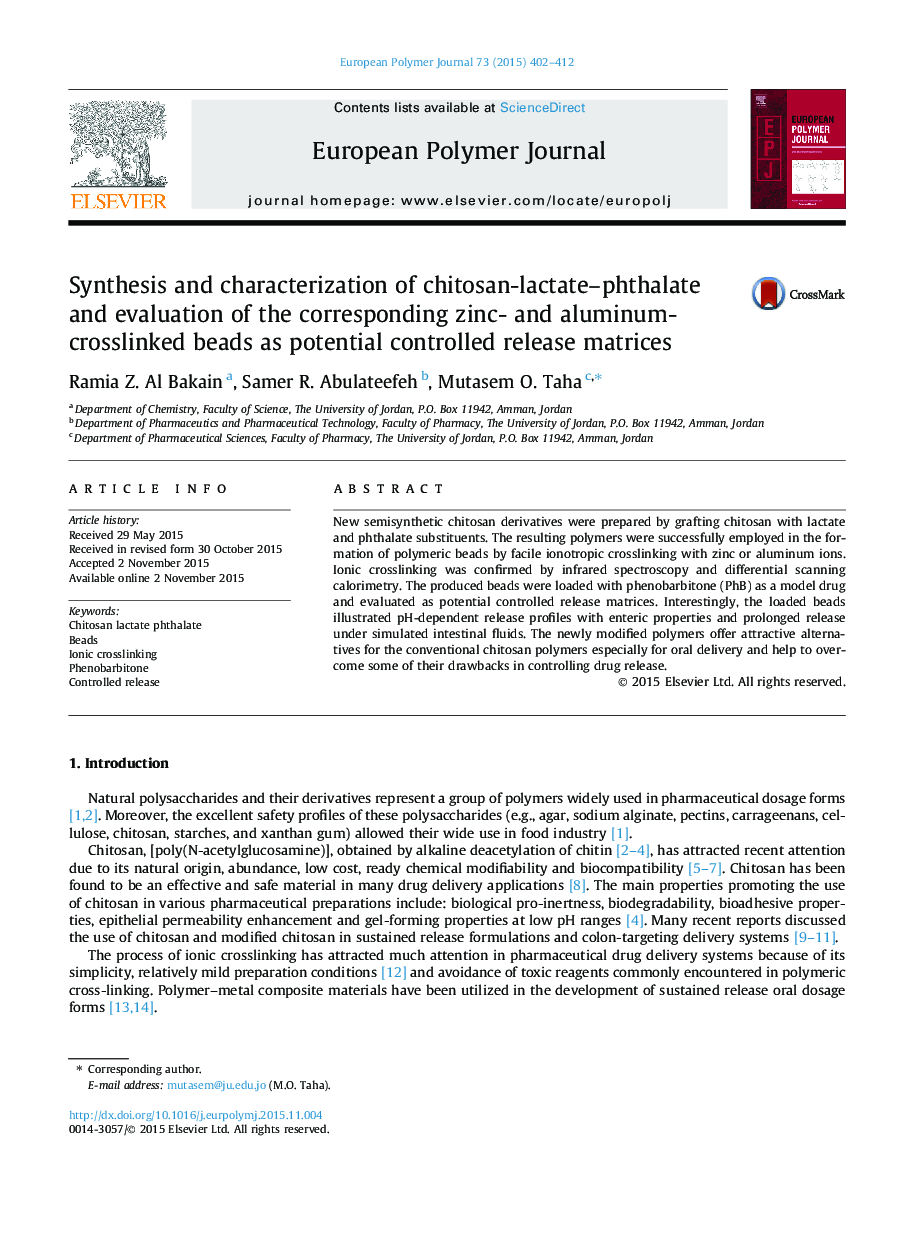| Article ID | Journal | Published Year | Pages | File Type |
|---|---|---|---|---|
| 1400388 | European Polymer Journal | 2015 | 11 Pages |
•Chitosan-lactate–phthalate polymeric conjugates were synthesized.•The polymeric conjugates were characterized by infrared spectroscopy and differential scanning calorimetry.•The polymeric conjugates were used to prepare zinc- and aluminum-crosslinked beads loaded with phenobarbitone.•The resulting beads were characterized by scanning electron microscopy.•The metal-crosslinked beads were evaluated as controlled release vehicles for the delivery of phenobarbitone as model drug.
New semisynthetic chitosan derivatives were prepared by grafting chitosan with lactate and phthalate substituents. The resulting polymers were successfully employed in the formation of polymeric beads by facile ionotropic crosslinking with zinc or aluminum ions. Ionic crosslinking was confirmed by infrared spectroscopy and differential scanning calorimetry. The produced beads were loaded with phenobarbitone (PhB) as a model drug and evaluated as potential controlled release matrices. Interestingly, the loaded beads illustrated pH-dependent release profiles with enteric properties and prolonged release under simulated intestinal fluids. The newly modified polymers offer attractive alternatives for the conventional chitosan polymers especially for oral delivery and help to overcome some of their drawbacks in controlling drug release.
Graphical abstractMetal crosslinking of chitosan phthalate and chitosan lactate phthalate with zinc and aluminum metal ions.Figure optionsDownload full-size imageDownload as PowerPoint slide
